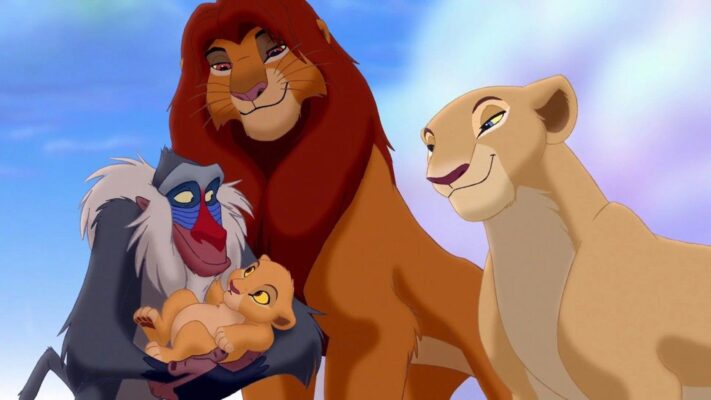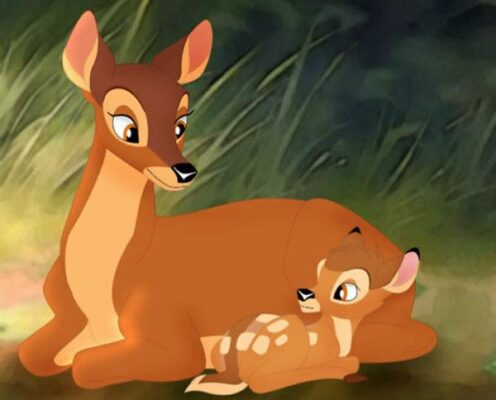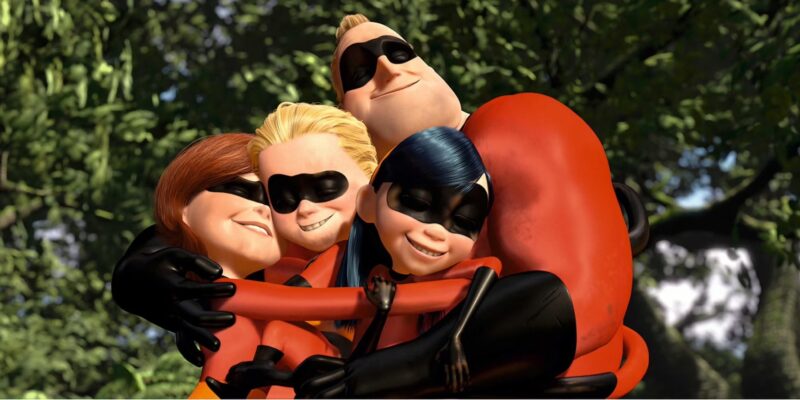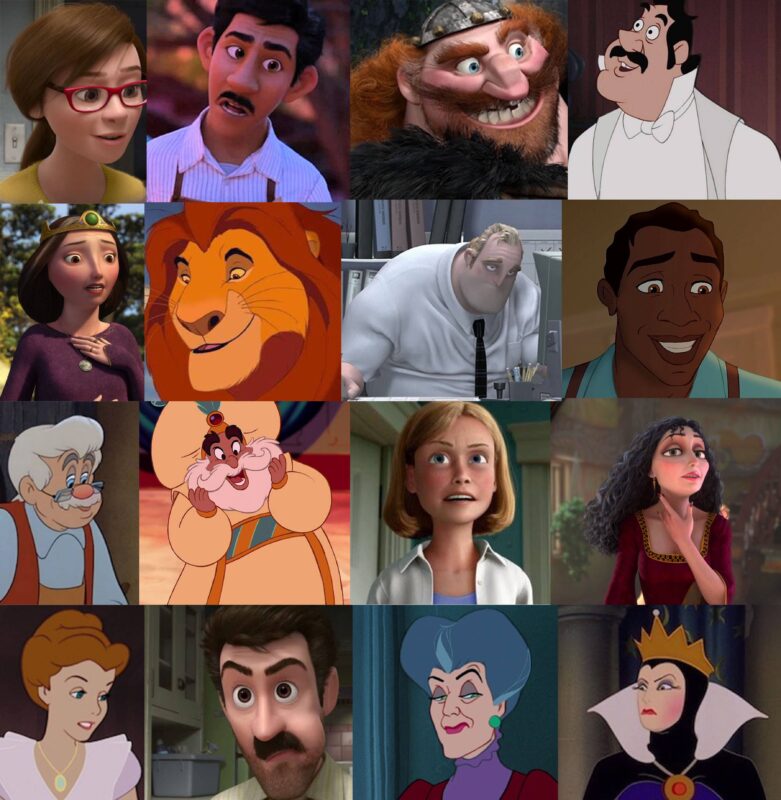Strap yourself in and prepare for a fantastic journey into the realm of Disney as we unravel the complexity and lessons in their portrayal of parent-child relationships. From the boundaries of the enchanted forests to the castles’ towering heights, this whimsical trip unravels the intricate maze of relationships between beloved Disney characters and their parents. Fear not, there won’t be any spoilers, only a fascinating exploration that highlights how these bonds, woven into enchanting storylines, convey essential life lessons and tug at the heartstrings, regardless of age. So, if you’re an ardent Disney aficionado or simply a curious reader, sail along as we travel through this magical article, aptly titled “Unraveling Disney’s Portrayal of Parent-Child Relationships: Uncovering the Complexities and Lessons”.
The Traditional Family Dynamic in Disney
In the world of Disney, the traditional family dynamic plays a significant role in the narrative and characterization.
The representation of the nuclear family
Disney often portrays the classic nuclear family structure to ground the fantastical elements of their tales in some semblance of reality. Characters within these families provide a familiar framework and help to drive the plot forward, fostering a comforting sense of normalcy amongst the talking animals and magic spells.
Gender roles and stereotypes
Your keen observation might have brought to light some age-old stereotypes subtly portrayed in Disney narratives. Mother figures are often gentle, caring, and nurturing while father figures are depicted as protective, authoritative, and brave. It’s important to reflect on these characterizations, for they indeed mirror traditional societal gender roles.
Depiction of parental duties
Parental duties in Disney movies often fall along traditional lines. Mothers are typically responsible for nurturing and providing emotional support, while fathers provide guidance and training. Disney demonstrates that assuming parental duties, even under extraordinary circumstances, contributes to the personal growth and maturity of the characters.
The evolution of the Disney family over time
As society evolves, so does the depiction of family in Disney films, with more complex and diverse family structures being represented. From the classic nuclear family of ‘Cinderella’ to the single mother in ‘The Princess and the Frog’, and the two-mom family in ‘Out’, Disney is certainly expanding its horizon.
Orphaned Heroes and Heroines
If you ever wondered why so many Disney heroes and heroines are orphans, then you’re on to something quite interesting.
Disney’s penchant for missing parents
Disney seems to have a particular affinity for missing parents, often using this as a plot device for character development. From Snow White to Elsa and Anna of ‘Frozen’, these characters’ trials and tribulations are intensified due to the absence of their parents.
The purpose of absent parents
By having characters navigate the world without parental guidance, Disney provides them with an opportunity to prove their bravery, intelligence, and resilience. The absence of parents often becomes the catalyst for the main characters’ quests and adventures, pushing them towards self-discovery.
Impact on character development
Characters with absent parents often experience significant character development throughout their arcs. They learn to be brave, independent, resourceful, and responsible due to their circumstances, with their resilience perfectly echoing the real-life strength of kids in similar situations.
The lesser-explored reasons behind parental absence
While there’s plenty of focus on the narrative impacts of absent parents, Disney also skilfully explores the emotional consequences. Characters tend to acquire emotional depth, displaying feelings of grief, longing, and vulnerability, thus fostering a deeper connection with the audience.

This image is property of images.unsplash.com.
Step-Parents and Villains
Disney seems to have a love affair with step-parents, often casting them as villains. It’s time we unpack this trope.
The step-parent trope
Although Disney’s classical tales hark back to timeless folklore, its proportional representation of step-parents as villainous figures contributes to a longstanding stereotype. From Cinderella’s wicked stepmother to the evil queen in Snow White, step-parents often get a bad rap.
Evilness associated with step-parents
Disney often associates step-parents with evilness to emphasize the contrast between them and the pure-hearted protagonists. Such dramatic portrayal adds intrigue and tension to the narratives and enhances the character arc of the main characters.
Analyzing step-parent-child relationships
Despite the often-negative depiction, there are intriguing dynamics to explore in these step-parent-child relationships. They often depict internal struggles for power and acceptance, which help to underline the core beliefs of the principal characters.
Addressing the negative portrayal of step-parents
Although many argue that it’s time Disney retired this stereotype, it’s heartening to see modern movies like ‘Enchanted’ and ‘Maleficent’ shed a more nuanced and sympathetic light on step-parents.
The Power of Parenthood in Disney
Parents in Disney movies, whether they’re present or merely memories, hold incredible sway over the directions their children take.
Parent figures as inspiration for protagonists
Disney protagonists, from Moana to Simba, often look up to their parents for inspiration. They learn values, gather courage, and draw strength from their parents, which shapes their character and impacts their decisions.
Parents’ deaths as pivotal plot points
The death of a parent often serves as a turning point in Disney movies. It motivates the protagonists to confront their fears, spurring them on their quests and encouraging them to overcome adversities.
Parents as mentors and guides
Parents in Disney movies typically serve as mentors and guides, imparting important life lessons and values to their children. This has a profound influence on the children’s moral compass and their understanding of the world.
The influence of parents on characters’ moral compass
The teachings of parents greatly guide and shape the Disney heroes and heroines’ ethical sense and actions, becoming their internal moral compass guiding them through murky waters.

This image is property of images.unsplash.com.
Single Parenthood in Disney Movies
Disney movies give us a realistic take on single parenthood with heartfelt stories of resilience and unwavering love.
The single parent trope
The single parent is a recurring trope in Disney movies like ‘Finding Nemo’ and ‘The Princess and the Frog’, where the lone parent navigates through challenges while providing for their children.
Challenges faced by single parents
Disney presents a realistic take on the struggles faced by single parents – emotional, financial, and otherwise. They accurately depict the emotional turmoil and the relentless determination it takes to raise a child single-handedly.
Significance and symbolism of single parents
The depiction of single parents in Disney movies reflects their prominence and impact in real-life societies. It’s an acknowledgment that families come in all shapes and sizes, and every family has its own unique strengths and challenges.
Portrayal of resilience and strength in single parents
Disney single parents are epitomes of courage, determination, and enduring love. Their stories resonate with audiences, sending out a strong message about the power of family, regardless of its size or structure.
Non-Traditional Parental Figures in Disney
Disney also recognizes and celebrates non-traditional parental figures, expanding its portrayal of familial bonds beyond what’s conventional.
Recognition of non-biological parents
Disney wonderfully showcases the significance of non-biological parents through movies like ‘Tarzan’, ‘The Fox and the Hound’, and ‘The Jungle Book’. These narratives demonstrate that the ties of love and care aren’t limited to biological relationships.
Importance of mentor-mentee relationships
In Disney narratives, mentor figures play crucial roles in guiding the protagonists, almost serving as parental figures. Whether it’s Baloo for Mowgli, Fairy Godmother for Cinderella, or Rafiki for Simba, these mentors shape the characters, helping them understand their abilities and live up to their potential.
Foster parents, godparents, and other caretakers
Disney has featured plenty of foster parents, godparents, and other caring figures who all share the common goal of nurturing their wards and preparing them for trials that lie ahead. This pushes the narrative beyond nuclear families, offering a more diverse and inclusive representation of familial bonds.
The shift towards inclusivity in more recent films
Recent Disney films are introducing more inclusive and diverse representations of families and parental figures. From Elsa and Anna’s bond in ‘Frozen’ to the unconventional family structure in ‘Lilo & Stitch,’ Disney is gradually breaking away from traditional family dynamics.

This image is property of images.unsplash.com.
Animal and Human Relationships in Disney
Disney’s stories have also weaved a unique narrative around animal-human relationships, offering new perspectives on parental relationships.
Family dynamics in anthropomorphic films
Disney’s anthropomorphic films bring an interesting dynamic to the fore. In movies like ‘The Lion King’ and ‘Finding Nemo’, animals adopting human traits underline the universal aspects of family life – courage, love, responsibility, conflict, and forgiveness.
Significance of human-animal bonds
The portrayal of human-animal bonds in films like ‘Tarzan’ and ‘The Jungle Book’ lends new depth to Disney’s idea of family. These relationships often show that love, care, understanding, and trust transcend species boundaries.
Unique parent-child relationships in films like ‘The Jungle Book’ and ‘Tarzan’
‘The Jungle Book’ and ‘Tarzan’ present unique parent-child dynamics, where the parental figures are animals, not humans. These scenarios open up conversations about what it means to be a family, demonstrating that familial relationships are formed not only by blood but by bonds of love and respect.
Moral messages behind these relationships
Disney underscores crucial moral messages through these relationships. It stresses respect for all sentient beings, the essence of genuine love, empathy, and the idea that every living entity deserves kindness, care, and protection.
Parent-Child Conflict and Resolution
Disney doesn’t shy away from portraying familial conflicts, exposing its audience to the nuanced aspects of family dynamics.
Depiction of familial conflicts in Disney
Conflicts in Disney movies express the varying dynamics and realities of familial relationships. From Ariel’s defiance in ‘The Little Mermaid’ to Merida’s rebellion in ‘Brave’, familial discord is an integral part of these narratives.
The journey towards reconciliation
Disney intelligently uses conflict to depict the journey towards resolution, understanding, and growth. The protagonists learn valuable lessons about the importance of open communication, understanding, and mutual respect in these narrative arcs.
Effects of such conflicts on the characters’ self-growth
Disney exposes its characters to family conflicts to fuel their self-growth. The journey from conflict to resolution helps the characters mature, develop empathy, understand others’ perspectives, and grow stronger emotionally.
Moral lessons from these conflicts and resolutions
These conflicts serve as a taskmaster offering significant moral lessons. They highlight that families are about love and forgiveness, understanding, and acceptance of individual differences.
Disney’s Lessons on Love and Family
Disney, through its movies, celebrates familial bonds and teaches valuable lessons about love, and family.
Celebration of familial bonds in Disney
Disney consistently emphasizes the importance of familial bonds, showcasing them as a source of strength, guidance, and unconditional love.
Lessons on unconditional love and forgiveness
Disney films are an endless source of lessons on unconditional love and forgiveness. Be it the love between sisters, Elsa and Anna in ‘Frozen’ or the friendship-turned-family in ‘Lilo & Stitch’, Disney movies continually stress the power of love and forgiveness.
Understanding the true essence of a family
Disney helps us understand that the essence of a family goes beyond traditional definitions and structures. It’s about the bond of love, care, sacrifice, and support that exists among its members.
Disney’s reinforcement on important family values
By weaving a family narrative into almost every story, Disney reaffirms that families, however big or small, traditional or unconventional, are the cornerstone of society, reflecting the values of unity, love, and support.
The Realists Take
Now, let’s get realistic and take a critical look at Disney’s portrayal of family dynamics.
Critical review on Disney’s portrayal of family
While Disney’s depiction of families has indeed evolved over time, presenting a variety of family structures and dynamics, some critics opine that there’s still room for improvement. The representation of step-parents, stereotypical gender roles, absence of parents- each narrative choice has its critics.
The positive impacts and possible harms
Disney movies can significantly influence young minds, providing positive lessons on love, resilience, and bravery. However, the continuous negative portrayal of step-parents or the frequent absence of parents may also lead to misconceptions and anxiety.
Recognizing the complexities in Disney’s presentations
It’s important to remember that Disney’s portrayals contain complexities. Fortunately, they are gradually advancing towards more nuanced and diverse representation, reflecting the changing societal norms.
The balance between fairytale and reality in Disney’s narratives
While Disney’s magical world is a beautiful escape, it’s essential to differentiate between fairytale and reality. It’s always wise to use Disney movies as conversation starters to discuss and understand family dynamics and values with young audiences.
Disney’s progress towards diversity and inclusive representation
Disney, as a formidable storyteller, has been gradually shifting towards more inclusive storytelling, introducing more diverse characters and acknowledging unconventional family styles. They deserve applause for taking broader, more inclusive strides within their narratives, influencing generations positively.
In a nutshell, navigating Disney’s portrayal of parent-child relationships is quite a magical carpet ride. It’s all about uncovering the complexities, understanding the lessons, and, of course, enjoying the journey, just as you would while watching a shooting star or a castle rise from a storybook page.



